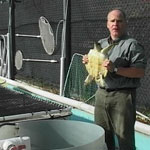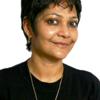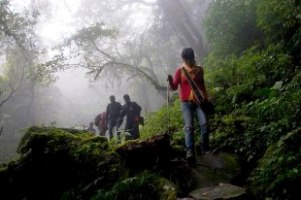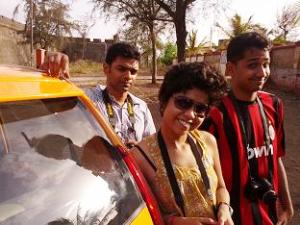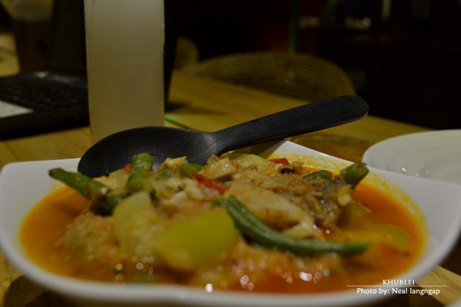I have been covering badminton for various publications since 1999. It took me four years to realise that I wasn’t getting any wiser when it came to the game’s history, its Indian connections, or the colourful personalities associated with it. Literature on the game is sparse. There are few books on the game – mostly ‘how-to-play’ guides, and those were written three or four decades ago.
As a sports reporter, I was a frequent visitor to Prakash Padukone’s badminton academy in Bangalore. I would hear a lot of stories about him – the way he started out as a child playing in a wedding hall; how he went on to beat the best players of his time, and so on. I was intrigued. It seemed a shame that these stories did not exist outside the memories of former players, and somehow, that sparked off a thought that perhaps his was a story worth telling.
Strangely enough, even though Padukone is so well known, the post-90s generations knew little about him. Most people recall, accurately enough, that he won the All England in 1980, but beyond that, they draw a blank.
Everybody knows that he was one of the legends of the game, perhaps India’s most accomplished sportsman in an individual physical sport, but very few can list out his accomplishments, as they can with a Sunil Gavaskar or a GR Viswanath.
Other traits contributed to the enigma. Padukone is always invoked whenever sportsmanship is mentioned … and no work on Indian badminton can be complete without an exhaustive cataloguing of his accomplishments.
So I thought… why not? Why not a biography of Prakash Padukone?
Logistically, it did not seem very difficult. After all, I ran into him every other day at his academy. I thought the task would be simple: get him to narrate his experiences and pen it in the form of a book!
That fantasy did not last even a few days. Padukone is extremely reticent, so a question like: “Tell me about your childhood” would draw perhaps a two-sentence response. I realised, pretty quickly, that I had to learn more about him to ask him the right (and specific) questions. So I went around meeting just about everybody connected with him: uncles, aunts, brothers, sister, friends, teachers… and later, teammates, rivals, coaches, trainees.
Of course there had to be a certain chronological method in tracking down events. In Padukone’s case, he had spent his teenage years in Bangalore. And then, as his talent flowered, he started travelling extensively. After his All England win in 1980, he went to Denmark to play for a club, Hvidovre. During those six years, Prakash was among the elite of the badminton world, playing tournaments in Asia and Europe, winning some, and mostly reaching the semi-finals or finals. It was during this period that he became one of badminton’s most recognisable faces. Unfortunately, since he was based in Europe, the Indian media carried only sketchy reports of his accomplishments, and that is why our knowledge of him is so limited.
My biggest challenge in tracking him was the lack of material, in the form of newspaper reports or other literature. The Badminton Association of India, which runs the game in the country, has no office of its own, much less a library, so an institutionalised archive was out of the question. So I had to depend on recollections by contemporaries, friends, and others associated with him… as time went, my work followed a pattern.
I would track down important events in a particular calendar year, then interview everybody who was associated with him during that time, and finally would go back to Padukone for corroboration. I discovered that he could be a great storyteller if you approached the topic the right way.
My writing happened in fits and starts… actually, the writing bit was the easiest. The much harder task was in preparing for the interviews, and then transcribing each interview. That was almost painful, but I was not comfortable with any other method.
As I got deeper into my work, the world of Indian and world badminton opened up. Tracking him down would be impossible if I restricted myself to Bangalore and interviewed people over the phone, so I decided to travel to wherever his former contemporaries were. I found myself in Bombay, Pune, Calcutta, Delhi, Hyderabad, Jamshedpur, Trivandrum, Cochin…
Then I got a lucky break: Jakarta was hosting an ‘Evening of Legends’ featuring the greatest players of Padukone’s era.
I had only read and thrilled to the names of Rudy Hartono, Han Jian, Morten Frost, Icuk Sugiarto, and others. Now, almost two decades after their most magical performances, they would come together again on the same stage.
I found myself talking to Rudy Hartono – the Indonesian acclaimed as the greatest-ever badminton player for having won eight All England titles; I raced alongside Han Jian as he rushed out after the event; I met Morten Frost – Padukone’s acclaimed rival – and spent two hours with him after having promised to trouble him only for 15 minutes…
When I was writing the book, it struck me that it could not be another chronological narrative. So much had happened through the course of the two years it took me to build the material… so there are flashes of personal narrative through the book. There is a process of discovery that happened while I wrote it, and I have included that progression as well.
I didn’t want the book to address only the badminton-following public. I have tried to avoid narrating only his badminton exploits, but I’ve also tried to bring out the dynamics of the game. I’m not sure I succeeded.
Enthused by the ‘indie’ philosophy, I did not approach any publisher initially. I self-published the book. But soon the reality of being an indie publisher hit me – dealing with a rogue of a printer; carrying books to distributors/ retailers; waiting for cheques that never came… going to a publisher helps avoid a lot of heartache. Eventually, I approached Niyogi through a literary agent, and the book is due to be published again soon.














